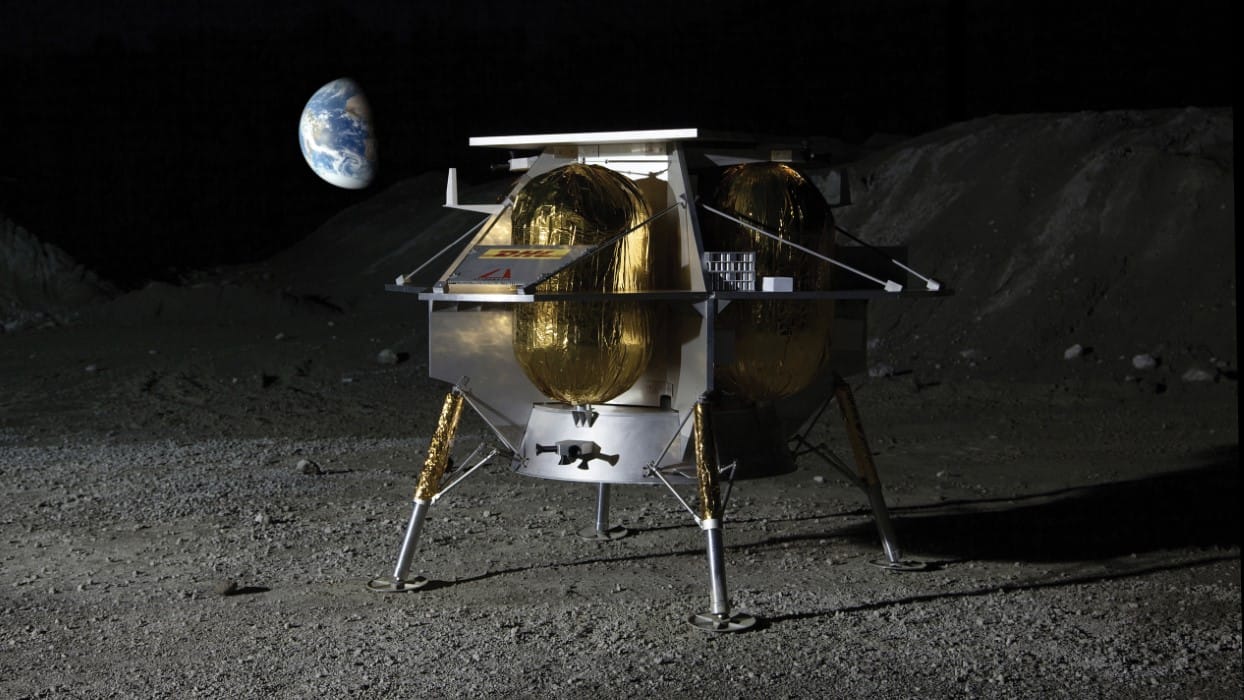The next spacecraft to land on the Moon, the Peregrine Lander, wasn’t built at one of NASA’s research labs or by an aerospace giant’s rocket manufacturing division. It was built by Astrobotic in Pittsburgh, a lunar logistics company at the heart of the city’s Space and Defense Innovation District recently established by the Keystone Space Collaborative. The Collaborative is a nonprofit organization that supports space industry initiatives in Pennsylvania, Ohio and West Virginia.
Astrobotic’s launch of the Peregrine in late 2023 will mark the second time in 50 years that a spacecraft has visited Earth’s satellite. (India’s Chandrayaan-3 spacecraft landed on the lunar surface on August 23rd.) Peregrine’s initial launch will carry 16 payloads, including instruments from NASA. A second mission, in 2024, will carry NASA’s 1,000-pound VIPER rover that will drill for water, among other tasks.
“It’s like a cargo truck taking its first delivery to the Moon’s surface,” says John Thornton, Astrobotic’s CEO. “Besides the NASA instruments, the cargo manifest includes a drinks company from Japan that is sending a time capsule with a powdered form of their drink in the hope that one day it can perhaps be mixed with Moon water.” Numerous other items from people around the world also will be on board.
Peregrine will not be returning to Earth, says Thornton.
“For now, it’s a one-way trip,” he says. “These are robotic landers that will land, deploy and operate for one lunar day. In the future, we’d like to sustain multiple years on the surface of the Moon and maybe one day we’re able to create a ferry service to go back and forth.”
A District Rich in Resources
Meanwhile, expect more companies in the space technology industry to populate Pittsburgh’s Space and Defense Innovation District. They’ll find much of what they need already in place.
“This is a great town to build a company like Astrobotic in because of the robotics talent that comes out of the region from Carnegie Mellon, the University of Pittsburgh and Penn State,” says Thornton. “The latter two are also very strong in space and aerospace. That talent feeds the company in part. The advantage of being a big fish in a small pond attracts talent from all over the country to come back to Pittsburgh. We have a lot of Pittsburgh boomerangers here at Astrobotic who have spent time at other space companies and now help form a veteran workforce here that can help us be successful on this first mission.”

Astrobotic is hardly the only space company in the region. Carnegie Mellon analysis in 2019 revealed that in Allegheny, Butler and Beaver Counties, adjacent to Pittsburgh, more than 100 entities were active in the space industry, including private companies. These are organizations that in the previous two years had received Department of Defense (DOD) or NASA grants or contracts focused on space-relevant activities, explains Justine Kasznica, founding board member and board chair of the Keystone Space Collaborative.
“We expanded our focus beyond the three counties to include Pennsylvania, Ohio and West Virginia,” says Kasznica. “We saw that we had some shared attributes — a shared manufacturing industry, a shared history in the Apollo programs of the past, strong supply chains and critical technologies to the space industry, including robotics, software development and material science. We found that this region is really ripe for being a much bigger player and taking a seat at the table of the new space economy, which is forecast to grow to $1 trillion by about 2030.” The Collaborative’s analysis of the tri-state region showed 550 participants using the same metric applied to the three counties.
Astrobotic is the anchor space company in Pittsburgh, but the city has other space industry assets that are part of its emerging cluster. The University of Pittsburgh, for example, is home to the National Science Foundation’s Center for Space, High-Performance and Resilient Computing (SHREC), a national space computing lab. The Carnegie Mellon Robotics Institute is a leader in robotics with much of the associated research originating with contracts from NASA. Kasznica says the Institute “continues to bring in an outsized amount of DOD and NASA space-related contracts.” In recent months, a Carnegie Mellon faculty member was awarded a NASA Space Technology Research Institute that will focus on additive in-space manufacturing. “This will be another shining star for the region as it relates to space,” says Kasznica.
Pittsburgh’s Manchester neighborhood, where Astrobotic is located, is the heart of the emerging Space and Defense Innovation District, and the city and state are more than on board with the notion of growing the area into a world class space industry cluster.
“The state has been a very significant partner in extending a Keystone Innovation Zone to include that location,” says Matt Smith, chief growth officer at the Allegheny Conference on Community Development. “The Space and Defense Innovation District is very closely located to the Carnegie Science Center, Acrisure Stadium and the historic Manchester community. This investment will really serve as an economic and community catalyst for a whole space cluster that not only benefits our economy, but it plants a flag in the ground that says Pittsburgh is a space hub.”

